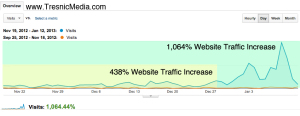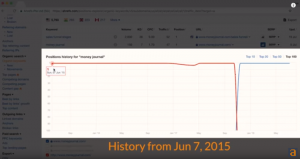The challenges of TV measurement abound. Columnist Alison Lohse believes marketers shouldn’t have to settle for ‘good enough’ to understand how TV is performing, but should instead look toward TV attribution as the answer.
 It’s no secret that TV — and therefore TV advertising — has evolved dramatically in the last 10 years. Consumers are cutting the cord. They’re watching TV online, on their phones or on their laptops, and it no longer happens in isolation. TV has become part of a holistic experience deeply connected to digital activities.
It’s no secret that TV — and therefore TV advertising — has evolved dramatically in the last 10 years. Consumers are cutting the cord. They’re watching TV online, on their phones or on their laptops, and it no longer happens in isolation. TV has become part of a holistic experience deeply connected to digital activities.
As marketers, we’ve tried to keep up. We’ve adapted our formats. TV advertising no longer falls into the two traditional camps of shorter brand spots and longer direct response (DR) infomercials, instead encompassing the full spectrum in between. We send viewers primarily to the web now via a vanity URL instead of an 800 number, and we use that traffic to tie TV back to digital and measure the efficacy of our campaigns.
Here’s the problem: It doesn’t really work. The days of an immediate straight line from DRTV to a single-channel purchase, either on the phone or on the web, are behind us.
In our multichannel world, consumer behavior is wildly erratic. Your target buyer might see your spot on Tuesday, visit your website on Wednesday, get reminded by a retargeting ad on Friday, and finally purchase via your mobile site on Sunday morning — but your vanity URL will never know.
The challenge and imperative of TV measurement are further compounded by its expense. While the ways that we watch and advertise on TV have changed, its dominance of our budgets has not.
Even when brands are just beginning to add TV to the mix, or when an organization has a strong digital focus, TV can easily take up 40 to 50 percent of your budget — and that’s on the low end of the scale. From creating the commercial to distribution costs to agency overhead to the actual media buy, TV’s broad exposure doesn’t come cheap.
TV is dynamic. It’s expensive. It’s powerful. So why can’t we measure it better?
When ‘good enough’ is not enough
In spite of the need to understand ROI on that much spend, TV analytics tend to lag behind their digital counterpart. Many organizations use in-house or agency approaches to get a general idea of how TV is performing and find that those insights are “good enough.”
For example, you know that this week you spent X amount and that conversions increased by 10 percent. You’re not sure exactly how to attribute the change, but you can see the lift, and that provides the directional guidance you need.
“Good enough” measurement methodologies range from homegrown spreadsheet systems to DIY data science to cobbled-together web analytics assumptions and proprietary agency models. Most of these solutions work some of the time — until they don’t.
At some point, internal or external circumstances will change, and “good enough” TV analytics will no longer provide the information you need to optimize your efforts.
What do those compelling events usually look like? Companies that come to us looking for help with TV measurement typically face external changes due to technology, seasonality or consumer behavior and/or one or more of these eight internal scenarios:
- Your tried-and-true tactics stop working (as well or altogether).
- You don’t trust your media agency.
- You launch a new product.
- You want to grow more quickly, but need to be able to justify your spend.
- You’ve been growing quickly, but now need to buy more efficiently.
- You’re spending too much and need to “right-size” your efforts.
- You’re just starting out with TV.
- You’ve plateaued on digital and need to scale on other channels.
These are not unique, unusual situations. They are inflection points faced by every business, especially those in growth mode, and they require more than directional guidance to weather successfully.
Enter TV attribution
TV attribution approaches performance TV measurement differently. Instead of attempting to draw a straight line with outdated techniques, it applies sophisticated machine learning to your data to uncover what’s truly working and why. It calculates how well you’re hitting your business objectives, extracts value from your current data, and perhaps most importantly, definitively proves ROI.
Most importantly, it’s not that hard. There is a prevailing assumption that because attribution stems from complex data science, it’s difficult (and slow and expensive) to implement. In reality, TV attribution is one of the more straightforward applications of attribution technology. (There’s a reason that so many agencies have been able to build their own proprietary models, whether they’re high-quality or not.)
You probably already have the necessary data; it’s just a matter of “crunching” it in new ways. That can happen far more quickly and much less expensively than you think.
TV marketers shouldn’t have to settle for “good enough.” A general understanding of how your TV investments are performing is better than nothing, but it won’t deliver the specificity and granularity you need when your business or the outside world forces a change. If you’re facing any of the circumstances mentioned above, it’s time for an upgrade. Your data will thank you.
Some opinions expressed in this article may be those of a guest author and not necessarily Marketing Land. Staff authors are listed here.
Marketing Land – Internet Marketing News, Strategies & Tips
(87)








